Techno line wireless weather station Owner's manual
- Category
- Weather stations
- Type
- Owner's manual
This manual is also suitable for

19
WEATHER STATION
Instruction Manual
INTRODUCTION:
Congratulations on purchasing this state-of-the-art weather station as an example of innovative design and quality
piece of engineering. Providing radio controlled time, date, calendar, Moon phase, indoor and outdoor temperature,
indoor and outdoor relative humidity, and air pressure history information, this unit will never keep you guessing on
current and future weather conditions. Operation of this product is simple and straightforward. By reading this operating
manual, the user will receive a better understanding of the Weather Station together with the optimum benefit of all its
features.
«
Instant Transmission+» is the up and coming state
-
of
-
the
-
art new wireless transmission technology,
exclusively designed and developed by LA CROSSE TECHNOLOGY.
“IT +” offers you an immediate update of all your outdoor data measured from the transmitters: follow your
climatic variations in real
-
time!

20
Stand
LCD Display
Function keys
FEATURES:
The Weather Station
Battery
compartment
Hanging hole

21
• DCF Radio controlled time with manual setting option
• Time reception ON/OFF (user selectable)
• 12/24 hour time display
• Time zone option ±12 hours
• Weekday and day calendar display (year and month only in setting mode)
• Display 12 Moon phases throughout the year
• Weather forecasting with weather tendency indicator
• Indoor comfort indicator
• Temperature display in ºC/ºF
• Indoor and outdoor temperature display with MIN/MAX records and time of reception
• Humidity data display as RH%
• Indoor and outdoor humidity display with MIN/MAX records
• Relative air pressure hPa/ inHg with adjustable reference value
• Weather icon sensitivity setting
• Relative air pressure history for the past 24 hours (electronic barometer with barometric pressure trend)
• Wireless transmission at 868 MHz

22
• Signal reception intervals at 4 seconds
• LCD contrast selectable
• Can receive up to 3 outdoor transmitters
• Low battery indicator
• Table standing or wall mounting
The Outdoor Thermo-hygro Transmitter
•
Remote transmission of outdoor temperature and humidity to Weather Station by 868 MHz
•
Display alternately the outdoor temperature and humidity readings on LCD
•
Shower proof casing
•
Wall mounting case (Mounting at a sheltered place. Avoid direct rain and sunshine)

23
TO INSTALL AND REPLACE BATTERIES IN THE WEATHER STATION
The Weather Station uses 2 x AA, IEC LR6, 1.5V
batteries. To install and replace the batteries, please
follow the steps below:
1. Insert finger or other solid object in the space at the
bottom center of the battery
compartment and lift up to remove the cover.
2. Insert batteries observing the correct polarity (see
marking).
3. Replace compartment cover.

24
INSTALL AND REPLACE BATTERIES IN THE
THERMO-HYGRO TRANSMITTER
The Thermo-hygro transmitter uses 2 x AA, IEC LR6, 1.5V battery. To install and replace the batteries, please follow the steps
below:
1. Remove the battery compartment cover.
2. Insert the batteries, observing the correct polarity (see marking).
3. Replace the battery compartment cover on the unit.
Note:
In the event of changing batteries in any of the units, all units need to be reset by following the setting up procedures. This is
because a random security code is assigned by the transmitter at start-up and this code must be received and stored by the
Weather station in the first 3 minutes of power being supplied to it

25
BATTERY CHANGE:
It is recommended to replace the batteries in all units on an annual basis to ensure optimum accuracy of these units.
Please participate in the preservation of the environment. Return used batteries to an authorized
depot.
SETTING UP
WHEN ONE TRANSMITTER IS USED
1. First, insert the batteries in the transmitter (see “How to install and replace batteries in the Thermo-hygro
outdoor transmitter” above).
2. Within 2 minutes of powering up the transmitter, insert the batteries in the Weather Station (see “How to install
and replace batteries in the Weather Station” above). Once the batteries are in place, all segments of the LCD
will light up briefly and a short signal tone will sound. Following the indoor temperature/humidity and the time as
0:00 will be displayed. If these information are not displayed on the LCD after 60 seconds, remove the batteries
and wait for at least 60 seconds before reinserting them. Once the indoor data is displayed user may proceed to
the next step.

26
3. After the batteries are inserted, the Weather station will start receiving data signal from the transmitter. The
outdoor temperature and humidity data should then be displayed on the Weather station. If this does not happen
after 2 minutes, the batteries will need to be removed from both units and reset from step 1.
4. In order to ensure sufficient 868 MHz transmission however, the distance between the Weather Station and the
transmitter should not be more than 100 meters (see notes on “Positioning” and “868 MHz Reception”).
Note:
In the event of changing batteries of the units, ensure the batteries do not spring free from the contacts. Always wait at
least 1 minute after removing the batteries before reinserting, otherwise start up and transmission problems may occur.
WHEN MORE THAN ONE TRANSMITTER IS USED
1. User shall remove all the batteries from the Weather Station and transmitters, and wait 60 seconds.
2. Insert the batteries in the first transmitter.
3. Within 2 minutes of powering up the first transmitter, insert the batteries in the Weather Station. Once the
batteries are in place, all segments of the LCD will light up briefly and a short signal tine will sound. Following the
indoor temperature/humidity and the time as 0:00 will be displayed. If these information are not displayed on the
LCD after 60 seconds, remove the batteries from both units and wait for at least 60 seconds before reinserting
them.

27
4. The outdoor temperature and humidity data from the first transmitter (channel 1) should then be displayed on the
Weather Station. Also, the signal reception icon will be displayed. If this does not happen after 2 minutes, the
batteries will need to be removed from both units and reset from step 1.
5. Insert the batteries in the second transmitter as soon as the outdoor temperature and humidity readings from the
first transmitter are displayed on the Weather Station.
Note : User shall insert the batteries into the second transmitter within 45 seconds after the Weather Station
displays the information of the first transmitter.
6. The outdoor temperature and humidity from the second transmitter and the "channel 2" icon should then be
displayed on the Weather Station. If this does not happen after 2 minutes, the batteries will need to be removed
from all the units and reset from step 1.
7. Insert the batteries in the third transmitter as soon as the "channel 2" icon and outdoor data are displayed on the
Weather Station. Then within 2 minutes, the channel 3 outdoor data from the third transmitter will be displayed
and the channel icon will shift back to "1" once the third transmitter is successfully received. If this is not happen,
user shall restart the setting up from step 1.
Note : User shall insert the batteries into the third transmitter within 45 seconds after the Weather Station
displays the information of the first transmitter.

28
8. In order to ensure sufficient 868 MHz transmission however, the distance between the Weather Station and the
transmitter should not be more than 100 meters (see notes on “Positioning” and “868 MHz Reception”).
IMPORTANT:
Transmission problems will arise if the setting for additional sensors is not followed as described above. Should
transmission problems occur, it is necessary to remove the batteries from all units and start again the set-up from step
1.
RESETTING
The Weather Station and the Thermo-hygro transmitter need to be reset when one of the following conditions occur:
•
Unsuccessful 868MHz signal reception.
•
Malfunction on the units.
•
Batteries replacement.
For resetting, remove all batteries from the units. Wait at least for 1 minute before powering up the Weather station
again. Proceed from step 1 in “Setting Up”.

29
DCF RADIO CONTROLLED TIME
The time base for the radio controlled time is a Cesium Atomic Clock operated by the Physikalisch Technische
Bundesanstalt Braunschweig which has a time deviation of less than one second in one million years. The time is
coded and transmitted from Mainflingen near Frankfurt via frequency signal DCF-77 (77.5 kHz) and has a transmitting
range of approximately 1,500 km. Your radio-controlled Weather Station receives this signal and converts it to show
the precise time in summer or wintertime.
The quality of the reception depends greatly on the geographic location. In normal cases, there should be no reception
problems within a 1500km radius of Frankfurt.
Once the outdoor data reception learning period is completed, the DCF tower icon in the clock display will start flashing
in the upper left corner. This indicates that the clock has detected that there is a radio signal present and is trying to
receive it. When the time code is received, the DCF tower becomes permanently lit and the time will be displayed.
DCF reception is done twice daily at 02:00 and 03:00 am. If the reception is not successful at 03:00 am, then the next
reception takes place the next hour and so on until 06:00am, or until the reception is successful. If the reception is not
successful at 06:00 am, then the next attempt will take place the next day at 02:00 am.

30
If the tower icon flashes, but does not set the time or the DCF tower does not appear at all, then please take note of
the following:
• Recommended distance to any interfering sources like computer monitors or TV sets is a minimum of 1.5 - 2
meters.
• Within ferro-concrete rooms (basements, superstructures), the received signal is naturally weakened. In extreme
cases, please place the unit close to a window and/ or point its front or back towards the Frankfurt transmitter.
• During nighttime, the atmospheric disturbances are usually less severe and reception is possible in most cases.
A single daily reception is adequate to keep the accuracy deviation below 1 second.

31
FUNCTION KEYS:
Weather Station:
The Weather Station has 4 easy to use function keys:
SET key
• Press and hold the key to enter manual setting modes: LCD contrast, time zone, time reception ON/OFF, 12/24
hour display, manual time setting, calendar, temperature °C/°F, pressure hPa/inHg, relative pressure v alue, and
weather icon sensitivity setting
• Reset all MIN/MAX records
IN key
OUT/+ key
SET key
CH key

32
IN key
• Press to toggle between MAX/MIN and current indoor temperature/humidity data
• Decrease relative pressure value (within manual set mode)
OUT/+ key
• Press shortly to toggle between MAX/MIN and current outdoor temperature/humidity data
• Increase, change, toggle all values in manual set mode
CH key
• Exit the manual set mode
•
Switch among display of channels (if more than 1 transmitter is used)
LCD SCREEN
The LCD screen is split into 4 sections displaying the information for time/calendar/moon phase, indoor data, weather
forecast and outdoor data.

33
Moon phase
icon
Weather
tendency
indicator
Calendar
Indoor relative
humidity in
RH%
Time reception
icon (for DCF
time)
Indoor
temperature in
ºC/ ºF
Weather forecast
icon
Outdoor data
signal reception
Outdoor
temperature in
ºC/ ºF
Outdoor relative
humidity
in RH%
Comfort indicator icon
Relative air
pressure history
bar graph
Relative air
pressure in hPa
/ inHg
Time
Low
battery

34
* When the signal is successfully received by the Weather Station, the outdoor transmission icon will be switched on.
(If not successful, the icon will not be shown on LCD). The user can then easily see whether the last reception was
successful (icon on) or not (icon off). On the other hand, the short blinking of the icon shows that a reception is
currently taking place.
MANUAL SETTINGS:
The following manual settings can be changed when pressing the SET key for:
• LCD contrast setting
• Time zone setting
• Time reception ON/OFF setting
• 12/24-hour format setting
• Manual time setting
• Calendar setting
• °C/°F temperature setting
• hPa / inHg pressure setting
• Relative air pressure setting
• Weather forecasting icon sensitivity setting

35
LCD CONTRAST SETTING:
The LCD contrast can be set within 8 levels, from LCD 0 to LCD7 (Default setting is LCD 4):
1. Press and hold the SET key until the digit starts flashing.
2. Use the OUT/+ key to view all levels of contrast.
3. Select the desired LCD contrast. Confirm with the SET key and enter in the Time Zone setting.
TIME ZONE SETTING:
Flashing
Last digit flashing

36
The time zone default of the Weather Station is “0”. To set a different time zone:
1. The current time zone value starts flashing.
2. Use the OUT/+ key to set the time zone. The range runs from 0 to -12 and then runs from +12 back to 0 in
consecutive 1-hour intervals.
3. Confirm with the SET key and enter the Time reception ON/OFF setting.
TIME RECEPTION ON/OFF SETTING:
In area where reception of the DCF time is not possible, the DCF time reception function can be turn OFF. The clock
will then work as a normal Quartz clock. (Default setting is ON).
1. The digit “ON” will start flashing on the LCD.
2. Use the OUT/+ key to turn OFF the time reception function.
Flashing

37
3. Confirm with the SET key and enter the 12/24-hour format setting.
Note:
If the Time Reception function is turn OFF manually, the clock will not attempt any reception of the DCF time
as long as the Time Reception OFF function is activated.
The time reception icon and the “DCF” icon will not be displayed on the LCD.
12/24-HOUR FORMAT SETTING:
The hour display can be selected to show hours in 12-hour or 24-hour settings. (Default 24-Hour)
1. Use the OUT/+ key to toggle between “12H” or “24H”.
2. Confirm with the SET key and enter the Manual time setting.
Flashing

38
MANUAL TIME SETTING:
In case the Weather Station cannot detect the DCF-signal (for example due to disturbances, transmitting distance,
etc.), the time can be manually set. The clock will then work as a normal Quartz clock.
1. The hour digit will start flashing.
2. Use the OUT/+ key to set the hour.
3. Press again the SET key to set the minutes. The minute digits start flashing.
4. Use the OUT/+ key to set the minutes.
5. Confirm with the SET key and enter the Calendar setting.
Note:
The unit will still try and receive the signal at 02:00 and 03:00 am despite it being manually set. When it does receive
the signal, it will change the manually set time into the received time. During reception attempts the DCF tower icon will
Hour flashing
Minutes flashing
Page is loading ...
Page is loading ...
Page is loading ...
Page is loading ...
Page is loading ...
Page is loading ...
Page is loading ...
Page is loading ...
Page is loading ...
Page is loading ...
Page is loading ...
Page is loading ...
Page is loading ...
Page is loading ...
Page is loading ...
Page is loading ...
Page is loading ...
Page is loading ...
Page is loading ...
Page is loading ...
Page is loading ...
Page is loading ...
Page is loading ...
Page is loading ...
-
 1
1
-
 2
2
-
 3
3
-
 4
4
-
 5
5
-
 6
6
-
 7
7
-
 8
8
-
 9
9
-
 10
10
-
 11
11
-
 12
12
-
 13
13
-
 14
14
-
 15
15
-
 16
16
-
 17
17
-
 18
18
-
 19
19
-
 20
20
-
 21
21
-
 22
22
-
 23
23
-
 24
24
-
 25
25
-
 26
26
-
 27
27
-
 28
28
-
 29
29
-
 30
30
-
 31
31
-
 32
32
-
 33
33
-
 34
34
-
 35
35
-
 36
36
-
 37
37
-
 38
38
-
 39
39
-
 40
40
-
 41
41
-
 42
42
-
 43
43
-
 44
44
Techno line wireless weather station Owner's manual
- Category
- Weather stations
- Type
- Owner's manual
- This manual is also suitable for
Ask a question and I''ll find the answer in the document
Finding information in a document is now easier with AI
Related papers
Other documents
-
La Crosse Technology wireless weather station Owner's manual
-
TFA 35.1026.54.IT - Focus Funk Owner's manual
-
 La Crosse Technology WS7014 Owner's manual
La Crosse Technology WS7014 Owner's manual
-
La Crosse Technology 35.1026.54.IT User manual
-
Technoline Model User manual
-
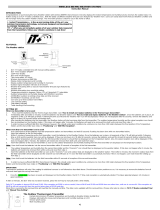 La Crosse Technology WIRELESS 868 MHz User manual
La Crosse Technology WIRELESS 868 MHz User manual
-
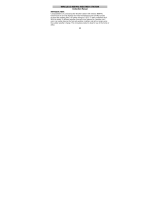 La Crosse Technology WS9620 Owner's manual
La Crosse Technology WS9620 Owner's manual
-
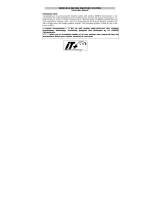 La Crosse Technology wireless weather station Owner's manual
La Crosse Technology wireless weather station Owner's manual
-
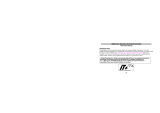 La Crosse Technology WS9632 Owner's manual
La Crosse Technology WS9632 Owner's manual
-
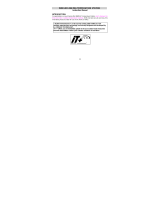 La Crosse Technology WS9090 User manual
La Crosse Technology WS9090 User manual

















































